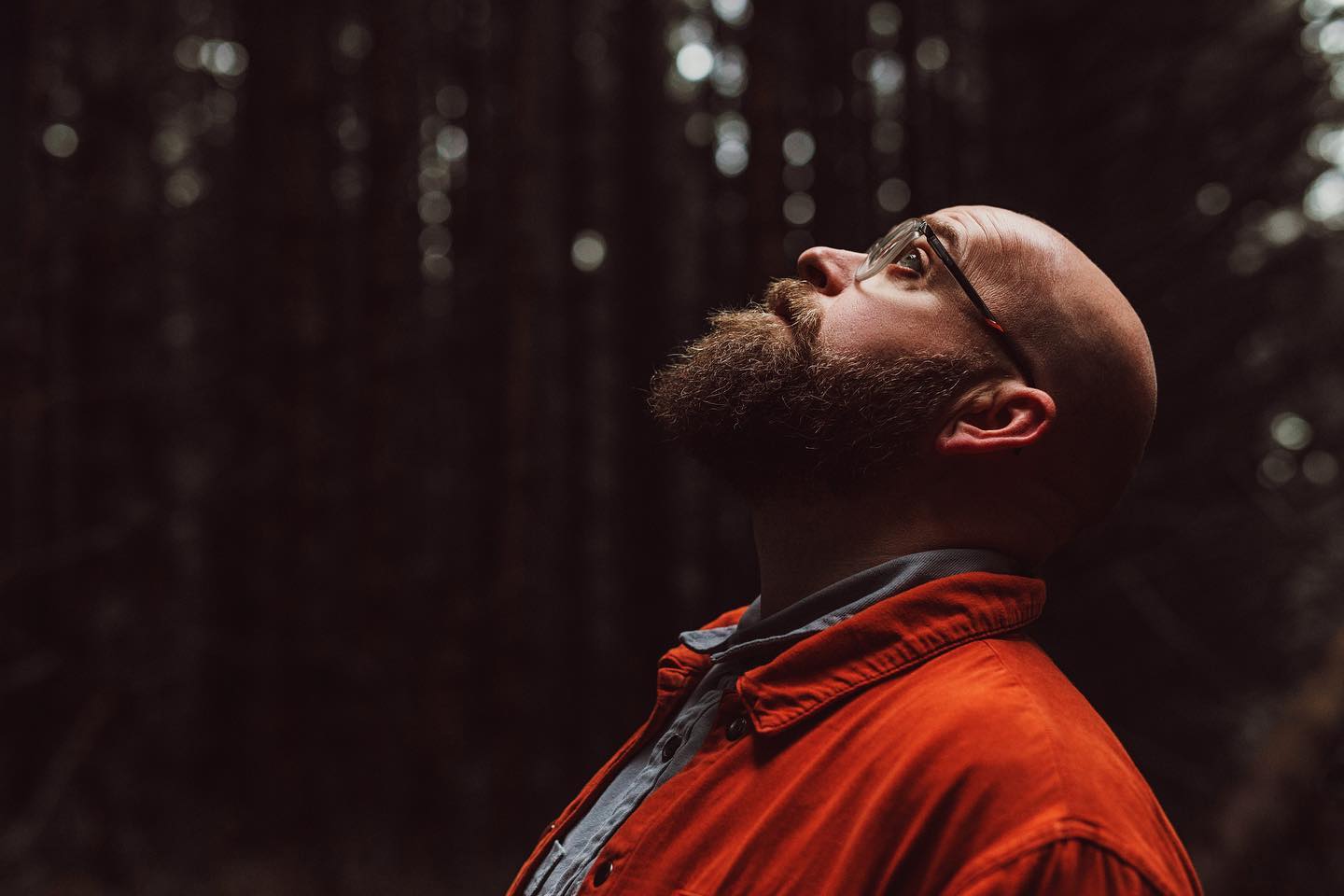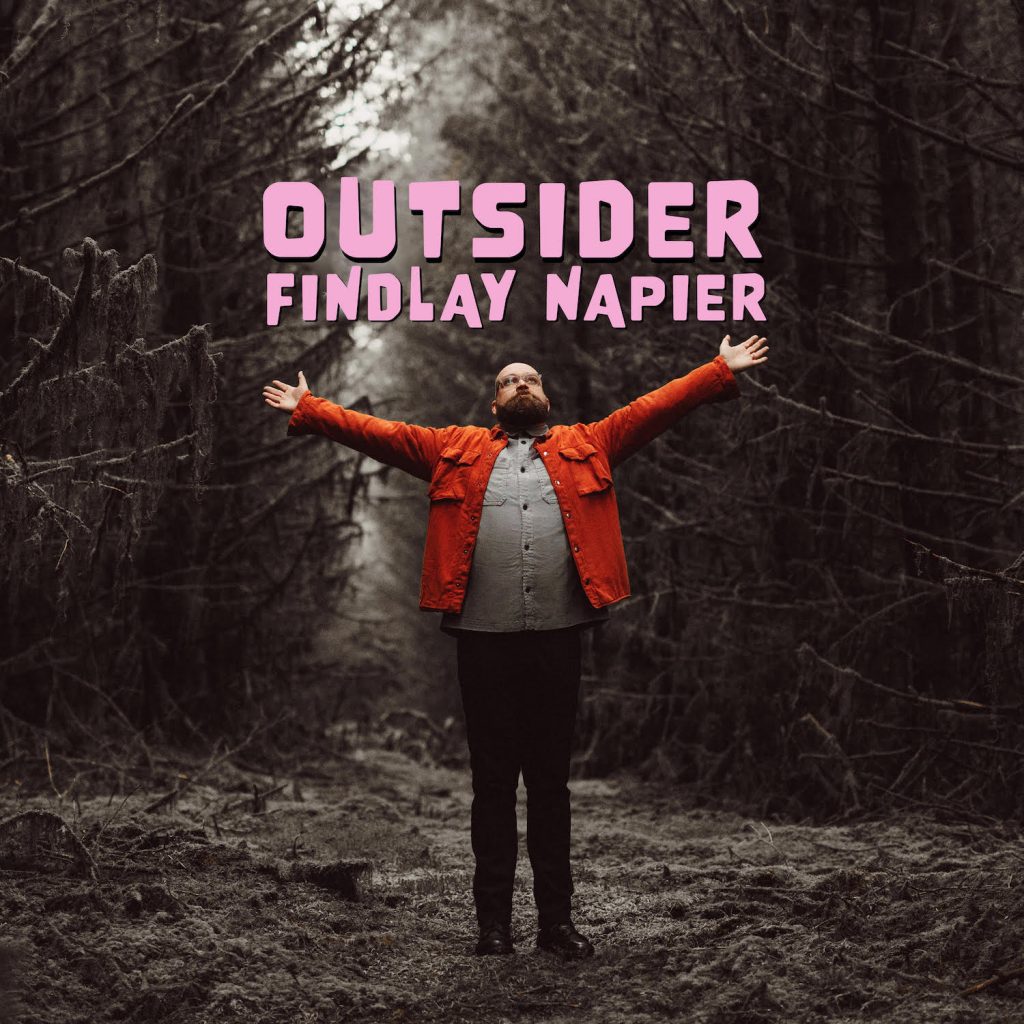📷 Photos by Elly Lucas
Sometimes I procrastinate. During the recording and writing of Outsider book, my skills grew from that of an amateur dilly-dallyer to that of an Olympic level dawdler. The shed was well organised, the garden weeded and the record collections alphabetised. Rooms were repainted, cars hoovered and dogs walked to exhaustion. Not easy with Labradors. Social media posts were queued and multiple excuses were formed and delivered with the creativity and flourish one would expect from someone whose primary function is to make stuff up and sell it.
How did the Outsider project start? I was due to release a new record and, unsurprisingly, I didn’t have a focused idea yet. After It Is What It Is was released in 2021, Jen Anderson (The Bothy Society, Apex Music) was keen to release another of my albums alongside an album-book. I knew that it would be an expensive project and I knew that the deadline for Creative Scotland’s Crowdmatch project was approaching. I am very grateful that two of my previous albums (VIP: Very Interesting Persons and Glasgow) were crowdfunded through the generosity of my fans. I had lost the capital I’d saved to make the next album during lockdown so I hoped that the crowdfunder, with the additional support of Creative Scotland, would raise enough to help me fund this expansive and expensive project.
For the first time ever I had a lot of material to choose from. Forty five unrecorded songs in total. Thirty or so were in very good shape, the rest were fragments or abandoned works in progress. During lockdown I met Francesca de Valence who runs “I Heart Songwriting Club” – an online community of songwriters. She encouraged me to sign up and, due to the club’s song a week philosophy, I was writing more than ever. I added these weekly creations to everything that had been written and remained unrecorded over ten or so years right back to The Bar Room Mountaineers days. It would be unfair to give the impression that I write a song a week. Despite many attempts I have never managed to write a song a week. I think six weeks in a row is my current record.
Selecting which songs would appear on the album was a problem. Jen suggested that I type the titles into a spreadsheet and in the second column write down the themes which featured in each song. This took ages. Mostly because I added some extra columns: beats-per-minute, time signature, key signature, form, if a phone demo existed, if the lyrics were typed up, did I know the chords and what extra work they would require to finish them. I chipped away at this task over a number of weeks and slowly themes began to emerge from the chaos. I had “Man Child”, some political songs, a few anti-war songs and about twenty that fell into the categories of “Outsider in Love” and “Outsider in Life”. This was when I settled on Outsider.
Boo Hewerdine agreed to produce and one weekend he came over to Arran. We whittled the twenty-ish songs down to eighteen, wrote two more thereby whittling the total back up to twenty-ish. That weekend we also listened to a lot of music trying to figure out how the album could sound. I love a late nineties album by Richard Thompson called Mock Tudor. I like the mix between the roar of the full band and intimate acoustic tracks. I also liked the way that the album was divided into three sections: “Metroland”, “Heroes in the Suburbs” and “Street Cries and Stagewhispers”. Inspired by this idea the extended version of Outsider (which is only available with the book), you’ll see that the album has four extra tracks and is divided into “Outsider in Life”, “Outsider in Love” and “Outsiders”. The coincidence here is that based on the demos I’d sent to Boo, his blueprint for the album was Thompson’s Mirror Blue. That album features the same production team as Mock Tudor. We were on the same page from the start, right from the choice of personnel and studios to the final mixes.
Apart from the inevitable logistical juggling to line up diaries, the recording process was reasonably painless (which will be the title of my next album). I did two days with Chris Pepper at his Saltwell Studio and recorded all of the intimate tracks with Chris adding keys, bass and some strange and uncomfortable noises.
A few weeks later we took a band into Chem 19 and recorded all the band songs with Kevin McGuire on bass and Liam Chapman on drums in three days. I returned to Chem19 with engineer Jamie Savage a few weeks later and recorded final acoustic guitars and lead vocals on those tracks. That was only two days although the second day was at least thirteen hours long.
The final two days were just before Christmas 2023 at Angus Lyon’s Gran’s House studio in Lanarkshire. Karina Smillie came and sang backing vocals, Angus added some keys and some of the crowdfunders came for a studio hang and ended up singing on a couple of tracks. I had to leave the session early to catch the last boat from Ardrossan to Brodick. A storm was coming in and if I didn’t leave I wouldn’t have made it back home for Christmas. Exciting times.
In January 2024 we sent the tracks to Mark Freegard to begin mixing. And with that all in hand there was only the album-book to go. That wouldn’t take too long.
What is an album book? An album-book is a great idea in a world where most people stream music. Concert goers buy a lot less merch at the merch table, very few cars come with a CD player and the days of “£50 man” (the man who spent £50 in Fopp every Saturday, the target audience of magazines like Mojo, Word and Uncut) are far behind us. The idea behind the album-book is that while listening to an album on your streaming service of choice you can pour yourself a glass, stretch out on your sofa and read about the album you’re listening to. You can look at pictures and even use the augmented reality function to see video clips. While streaming one often has no idea of the song title, the story behind the song (very important in the world of folk songwriting), the musicians playing on the recording, where it was recorded let alone the make and model of guitar, the brand of strings or the gauge of plectrum (I use a 1mm TF 100 by Wegen). The album-book is an opportunity for an artist to take the sleeve notes of an album and extend them. In my case I extended them to a 154 page full colour coffee table book with augmented reality content.
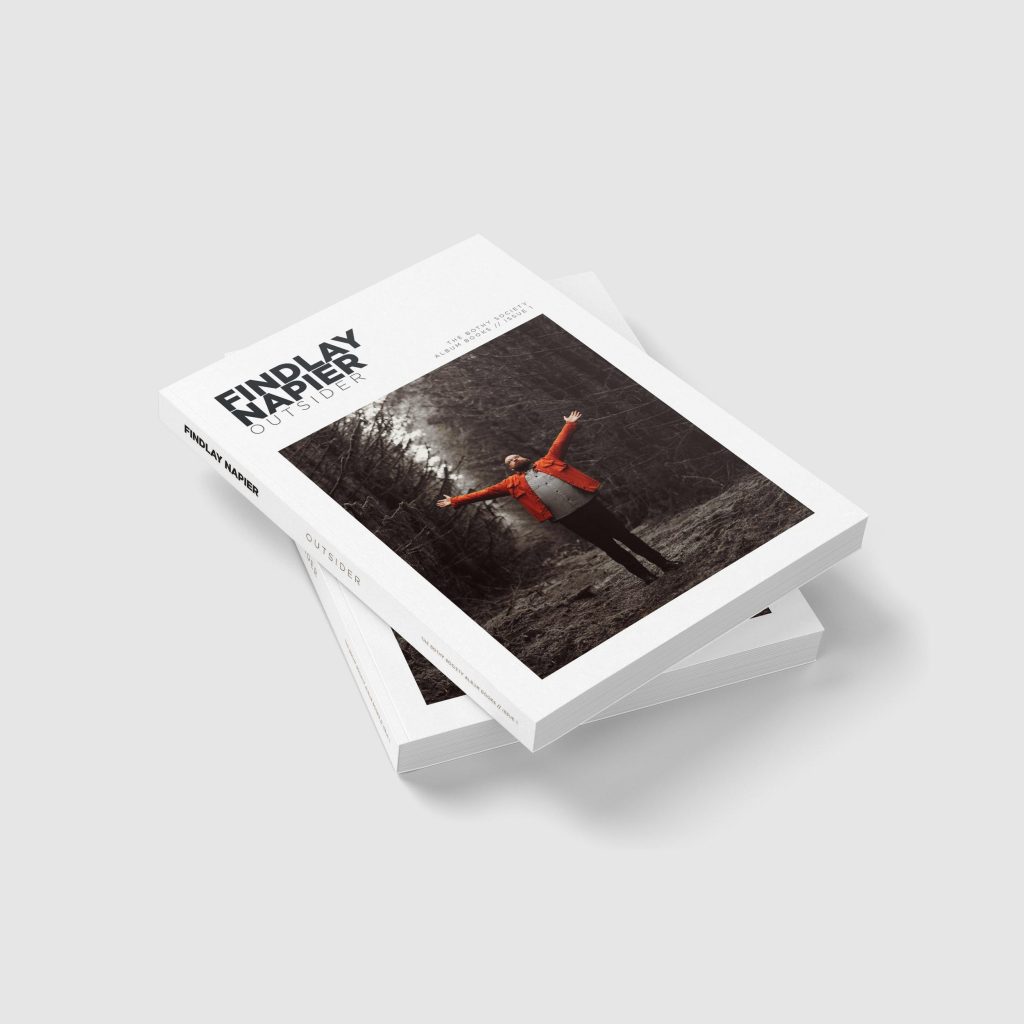
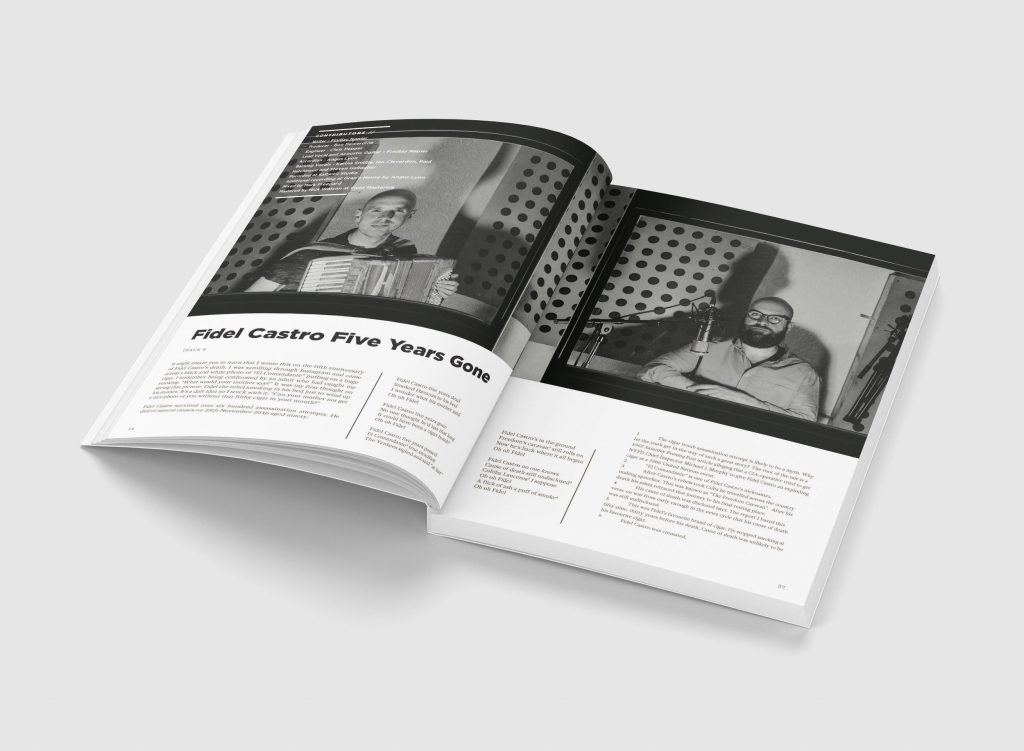
The phrase “biting off more than I can chew” springs to mind. I am an eternal optimist so the reality of writing a book was far from my mind when I decided to do it. Fellow musicians take note that had it not been for Jen Anderson’s typesetting skills and the proofreading skills of Audrey Hewerdine and Ian Howe, crowdfunders of this project would still be waiting for their books and I would still be trying to figure out which hyphen to use.
This was my third crowdfunder so I knew that I had to take lots of photos and videos of the sessions to share with the funders. Even with that knowledge I didn’t take anywhere near enough for a coffee table book. Thankfully we had access to loads of photographs from Elly Lucas when she visited us in Chem 19 studio. Musicians, should you choose to go down the album-book route, you either need to be incredibly organised or you need to employ a photographer to document every part of the process, a proof-reader/editor and a typesetter. This I learned the hard way.
I will write it while I am away on tour. How hard can it be? It turns out driving the length and breadth of the UK, sound-checking, feeding myself, finding the hotel and repeating is not where I do my best writing. In fact it is not where I do any writing. I do a lot of listening and I get a lot of ideas for songs and things but no actual sitting at an open laptop typing in words took place. There was always some reason I couldn’t write. Too tired, too busy and tomorrow were the primary reasons.
On one tour I listened to John Higgs’ brilliant book The KLF: Chaos, Magic and the Band Who Burned a Million Pounds, their have-a-go attitude inspired me to at least get started. On a subsequent tour I listened to Rick Rubin’s The Creative Act: A Way of Being. I so wanted his book to be rubbish. I so wanted it to be filled with useless airy-fairy pseudo spiritual guff. It was neither of those things, in fact it was the turning point for all the writing I did despite featuring a gong between each chapter. Rubin’s book inspired me to take the short paragraph on songwriting Jen had asked for and to turn it into a proper deep dive into my techniques, finally setting down a lot of the things I talk about in workshops. I learned a lot about what I do simply by writing it down. I wrote a very silly thing about audio mastering which a few of my sound engineer pals have enjoyed. It is very niche but it was a pleasing thing to write. The book allowed me the space to write about things that I talk about with other songwriters and musicians. A load of interesting and amusing things that deserve to be shared with the general public but never make it out of the dressing room, the green room or the table in the corner of a bar after a show.
With the CD pressed, the book proofed and typeset it only remained to gather the augmented reality content. We have some great little films from the studio, a flick book of my original notebook where you can see the songs forming on the page, Elly Lucas’s entire cover photoshoot from the woods above Brodick and a whole lot of other interesting things. People who buy the book download an app and when they hold their phone or tablet over certain photographs they come to life. There’s even a little cartoon of my dog Floraidh and I running up the Fairy Glen. Over the course of the Outsider project I struggled with old technology like paper diaries and word processing packages so you can imagine that there were a few nail biting weeks waiting for the Fireside app to work. Poor Jen had the thankless task of testing each of the pieces of AR content on various old and new Android and Apple devices.
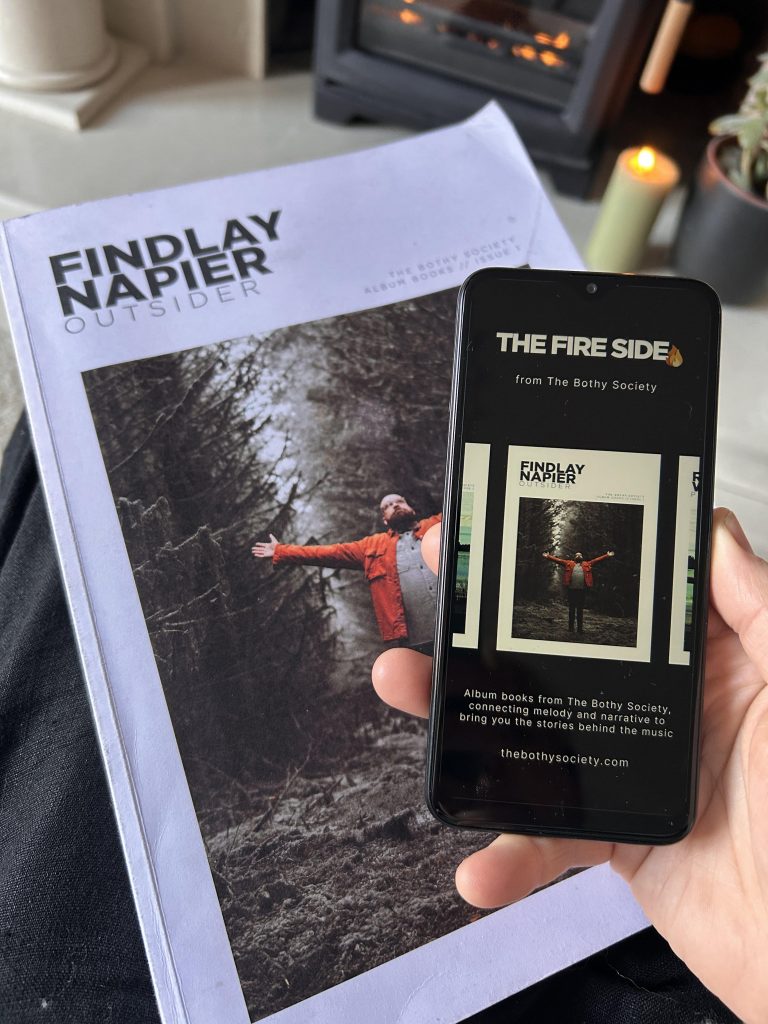
Thankfully Outsider is finally out, released at last on the 4th April on The Bothy Society label. I am now blundering in another landscape, the land of Whatnext. Despite being well trodden, Whatnext still remains completely unmapped. Many cartographers have tried but its ever changing features make it hard to translate into two dimensions. “Just make a list”, they say but that would involve sitting down for long enough to make a list.
Readers should note that this blog was delivered late because I believed (optimistically) that I would find time to write it while teaching at Adult Fèis Rois in Ullapool. Some people never learn.
Outside Album and Coffee Table Book available here.


